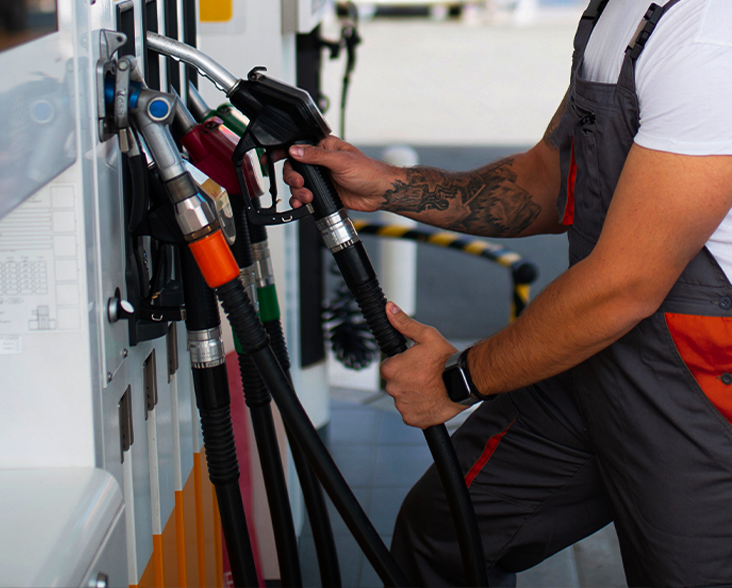The Future of Ethanol in India: Meeting the Nation’s Growing Energy Needs
India, with its rapidly expanding economy and increasing population, faces an ever- growing demand for energy. As the country seeks to balance economic growth with environmental sustainability, ethanol has emerged as a key player in the nation’s energy landscape. The use of ethanol, particularly as a biofuel, offers a promising solution to reduce reliance on fossil fuels, lower greenhouse gas emissions, and enhance energy security. Let’s explore the future of ethanol in India, considering the opportunities, challenges, and potential impact on the country's energy needs.
The Role of Ethanol in India’s Energy Mix
Ethanol, a renewable fuel made from various plant materials, is increasingly being used as a blend with gasoline to power vehicles. The Indian government has recognized the potential of ethanol as a sustainable alternative to traditional fossil fuels and has set ambitious targets to increase ethanol blending in petrol. The National Policy on Biofuels, introduced in 2018, aims to achieve a 20% ethanol blend (E20) with petrol by 2025. This policy is part of a broader strategy to reduce India's crude oil imports, lower carbon emissions, and boost the agricultural economy.
Benefits of Ethanol for India
Reduction in Crude Oil Imports: India is one of the largest importers of crude oil, making the country vulnerable to global oil price fluctuations. By increasing ethanol production and blending, India can reduce its dependence on imported oil, thereby improving its energy security and reducing the trade deficit.
Environmental Sustainability:
Ethanol is a cleaner-burning fuel compared to traditional gasoline. It emits fewer greenhouse gases, particulate matter, and carbon monoxide, contributing to improved air quality and reduced environmental impact. The use of ethanol can play a crucial role in India's efforts to meet its climate goals under the Paris Agreement.
Boost to the Agricultural Sector:
Ethanol production in India is primarily derived from sugarcane, and the government's push for higher ethanol blending is expected to create a steady demand for this crop. This can provide farmers with a stable income, reduce surplus sugar stocks, and promote rural development. Additionally, the diversification into ethanol production can mitigate the economic risks associated with the cyclical nature of the sugar industry.
Job Creation:
The expansion of ethanol production facilities and the associated supply chain can generate employment opportunities in both rural and urban areas. From farming to processing and distribution, the ethanol industry can create jobs across various sectors.
Challenges in Scaling Ethanol Production
While the future of ethanol in India appears promising, several challenges must be addressed to realize its full potential.
Feedstock Availability:
The primary feedstock for ethanol in India is sugarcane, a water-intensive crop. With growing concerns about water scarcity, especially in key sugarcane-producing regions, there is a need to explore alternative feedstocks such as maize, sorghum, and agricultural waste. Diversifying the sources of ethanol can ensure a stable and sustainable supply of raw materials.
Infrastructure Development:
To achieve the E20 target, India needs to develop the necessary infrastructure for ethanol production, storage, and distribution. This includes setting up additional ethanol plants, creating blending facilities, and upgrading fuel stations to supply ethanol-blended petrol. The investment required for this infrastructure development is substantial and will require coordinated efforts from both the public and private sectors.
Technological Advancements:
The efficiency of ethanol production and the performance of ethanol-blended fuels can be enhanced through technological innovations. Research and development in areas such as advanced biofuels, second- generation ethanol production, and engine optimization for ethanol blends are essential to overcome technical barriers and improve the overall viability of ethanol as a fuel.
Regulatory and Policy Support:
The success of the ethanol industry in India hinges on consistent and supportive government policies. This includes favorable pricing mechanisms, subsidies for ethanol producers, and clear regulatory frameworks for blending and distribution. Ensuring that policies remain stable and predictable will encourage investment and foster the growth of the ethanol industry.
The Road Ahead for Ethanol in India
The future of ethanol in India is intrinsically linked to the country's broader goals of energy security, environmental sustainability, and economic development. Achieving the E20 target by 2025 will require concerted efforts from all stakeholders, including the government, industry, and farmers.
To ensure the long-term viability of ethanol as a key component of India's energy mix, it is essential to address the challenges related to feedstock availability, infrastructure development, and technological innovation. Additionally, the exploration of alternative feedstocks and the adoption of advanced production technologies will be crucial in making ethanol a sustainable solution for India's growing energy needs.
As India continues on its path of rapid economic growth, the adoption of ethanol and other biofuels can play a significant role in meeting the country's energy demands while mitigating environmental impact. The future of ethanol in India is not just about reducing dependence on fossil fuels; it's about creating a cleaner, greener, and more sustainable future for generations to come.




